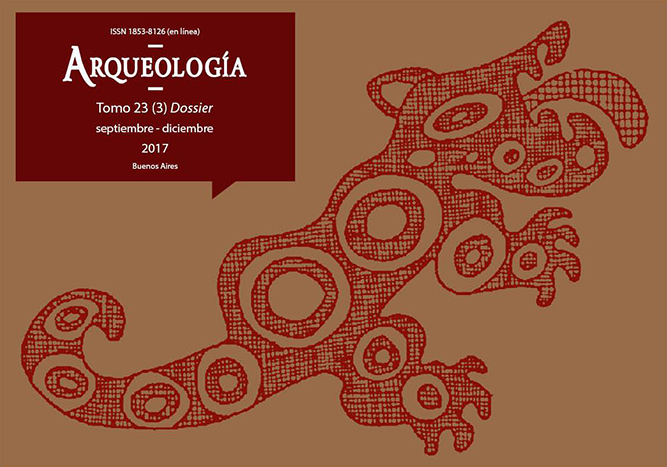The use of faunal resources along the Atlantic coast of Tierra del Fuego
Keywords:
Atlantic coast, Tierra del Fuego, Hunter-gatherer-fisher, Late Holocene, Fauna
Abstract
In this article, we present the analysis results of the faunal resources from the Okon XXI, Teis X and Teis XI (Late Holocene) archaeological sites, located along the Atlantic coast of Tierra del Fuego (near Estancia María Luisa). In regard to faunal resource consumption, the results show the exploitation of a large-species spectrum, with a predominance of marine fauna (pinniped, fish and marine birds), which nevertheless was not focused on the use of a single taxon. Additionally, this work confirms that these CRP (hunter-gatherer-fisher) groups had considerable knowledge of coastal and terrestrial environments, and consequently of how to exploit its resources. Four very diverse taxa are found across all sites: Lama guanicoe, Arctocephalus australis, Austrolycus sp., and Phalacrocorax sp. A combined analysis of other Late Holocene sites along the Atlantic coast of Tierra del Fuego provides crucial information concerning the variable intensity in use of guanaco and marine resources. However, there is a marked tendency: towards the South there is a greater consumption of marine resources and birds and a lesser one of guanaco, when compared against sites along the Northern coast.Downloads
Download data is not yet available.
How to Cite
Bas, M., & Lacrouts, A. M. (1). The use of faunal resources along the Atlantic coast of Tierra del Fuego. Arqueología, 23(3), 197-218. Retrieved from http://revistascientificas.filo.uba.ar/index.php/Arqueologia/article/view/4014
Section
Articles
Authors who publish in this journal agree to the following conditions:
- Authors retain copyright and yield to the journal right of first publication with the work registered with attribution license Creative Commons, which allows third parties to use the published always mentioning the authorship of the work and first publication in this magazine.
- Authors can make other independent and additional contractual arrangements for the non-exclusive distribution of the version of the article published in this issue (p. Eg., Inclusion in an institutional repository or publish it in a book), provided that clearly indicate that the work was published for the first time in this magazine.
- It allows and encourages the author / s to publish their work online (eg institutional or personal pages) before and during the process of revision and publication, as it can lead to productive exchanges and greater and more rapid dissemination of work published (See The Effect of Open Access).





(1)13.png)






1.jpg)
1.jpg)


13.png)
1.png)


(1)1.png)









